A Watch Collection Begins: GaryG And His Bucherer Chronometer
by GaryG
Just as the journey of a thousand miles begins with a single step, a collection, no matter its eventual size or value, begins with a single watch.
This is the story of the first watch that I bought for myself, one that I still own and wear 45 years later: a chronometer bearing the Bucherer (now Carl F. Bucherer) name.
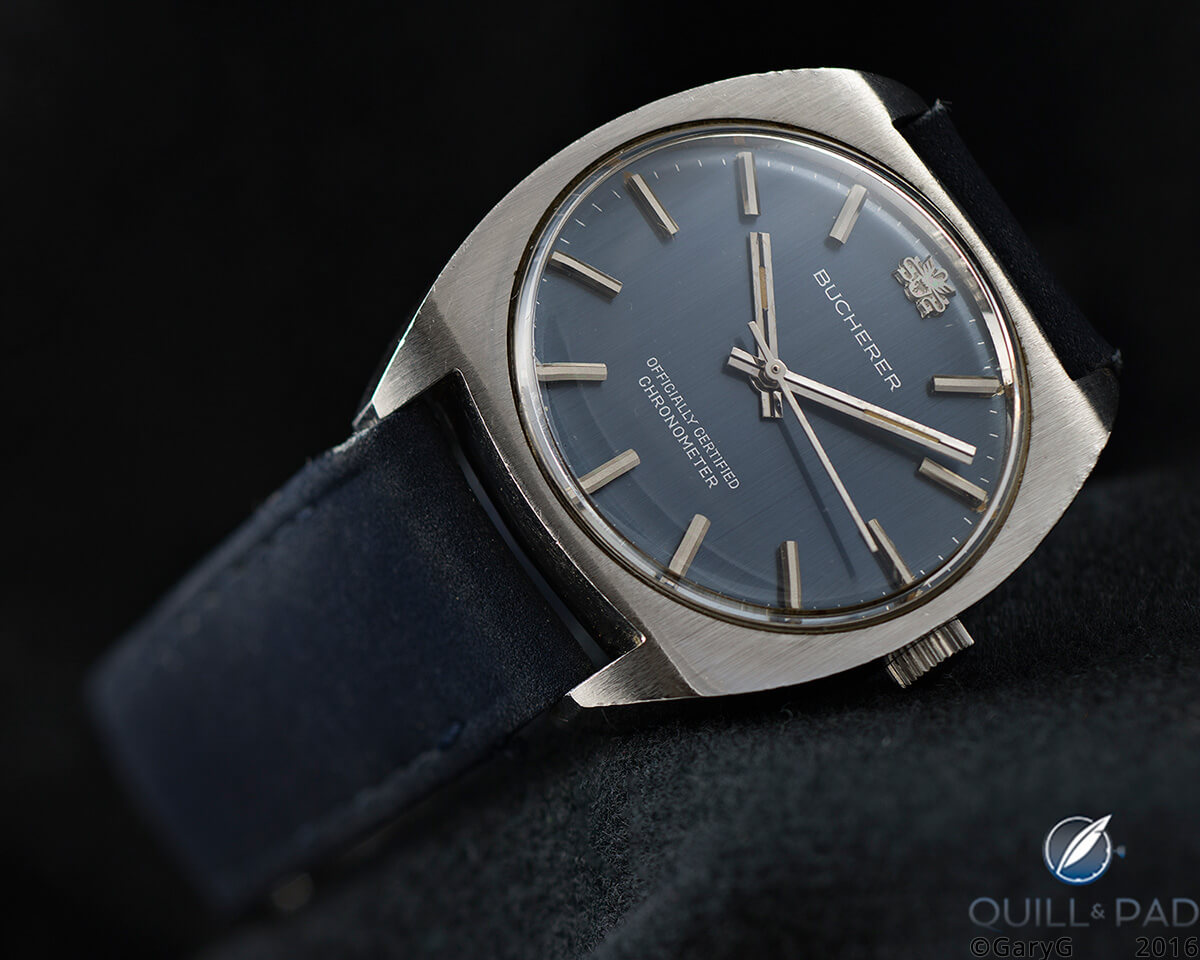
The author’s Bucherer Chronometer
The horn and the trip
Given my modest upbringing in an exurb of Pittsburgh, Pennsylvania, it was actually quite unlikely that I would ever come in contact with – let alone buy – a high-precision Swiss watch at the tender age of 15.
The catalyst in this case was a relatively unusual musical instrument, the alto clarinet. Even if you’ve played in a concert band, it’s possible that you’ve never even seen one of these creatures occupying the middle tonal range between the “normal” clarinet and its deep-throated brother, the bass clarinet.
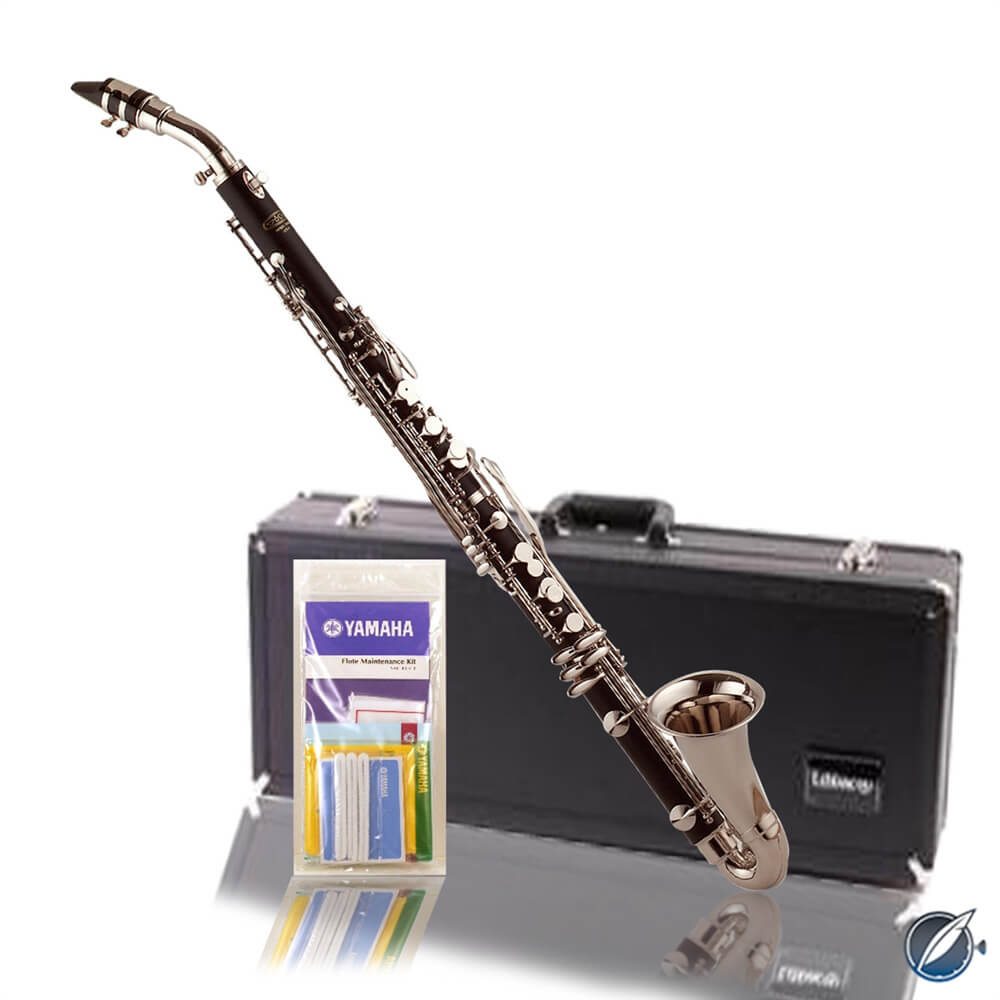
Student-line alto clarinet
I wasn’t that great an instrumentalist as a youth. Partly as a result, I took advantage of every opportunity to flee the back rows of our school band’s clarinet section and play various loaner instruments that included the bassoon and alto clarinet.
When it came time to audition for “honors” bands, I rode the rarity of my horns into a variety of local, all-state, and regional ensembles, culminating in the opportunity to tour Europe with the School Band and School Chorus of America.
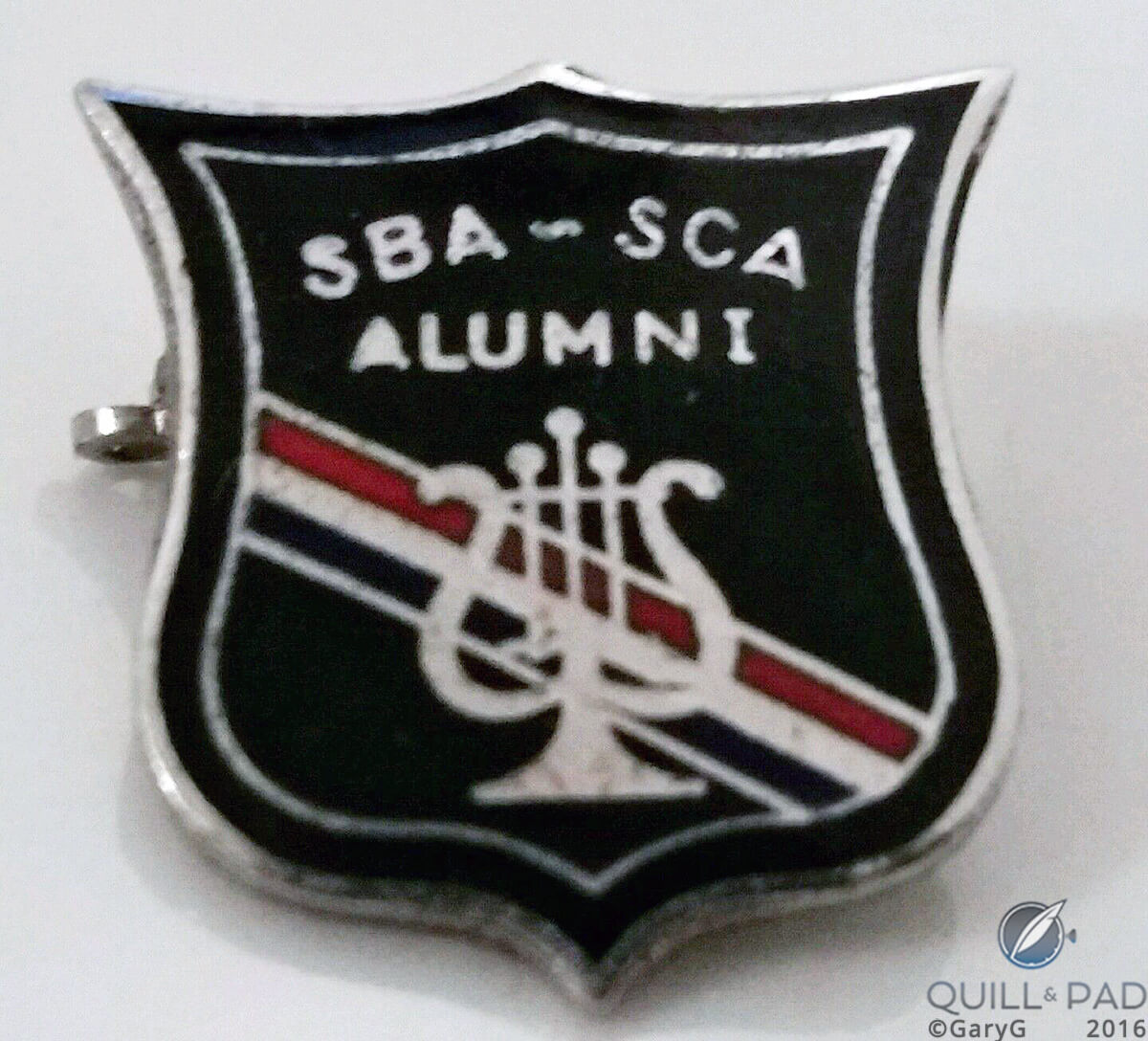
School Band and Chorus of America lapel pin
Through a combination of odd jobs and the pre-Internet equivalent of a gofundme campaign, I managed to raise the thousand-dollar trip expense (almost $6,000 in today’s money) along with a spending money kitty of $48.
In late June of 1971, I met up in New York with my new musical colleagues and we took off for Brussels on my very first airplane flight to begin our adventure.
After a few days of rehearsals, we began to tour from city to city, riding in a caravan of buses by day and playing concerts in the evenings. We snaked through France and then made our way to Lucerne, where we were to stay for a few days while performing outdoors in a few of the surrounding towns.
I was immediately smitten with the Alps, the lakes, the flowers, and pretty much everything Swiss, a fascination that endures to this day. And one item in a small packet of welcome gifts we received, a small silver souvenir spoon bearing the name “Bucherer,” intrigued me enough that I made my way to the store of the same name on Schwanenplatz, Lucerne’s central square.

Bucherer store, Schwanenplatz, Lucerne (photo courtesy Bucherer.com)
I did have some company on my visit: another member of the band from somewhat more well-off circumstances who was on a mission to buy his first Rolex.
While he made his way from display to display of gleaming Rolex watches, my attention was drawn to another piece: a steel-encased watch with a beautiful blue dial.
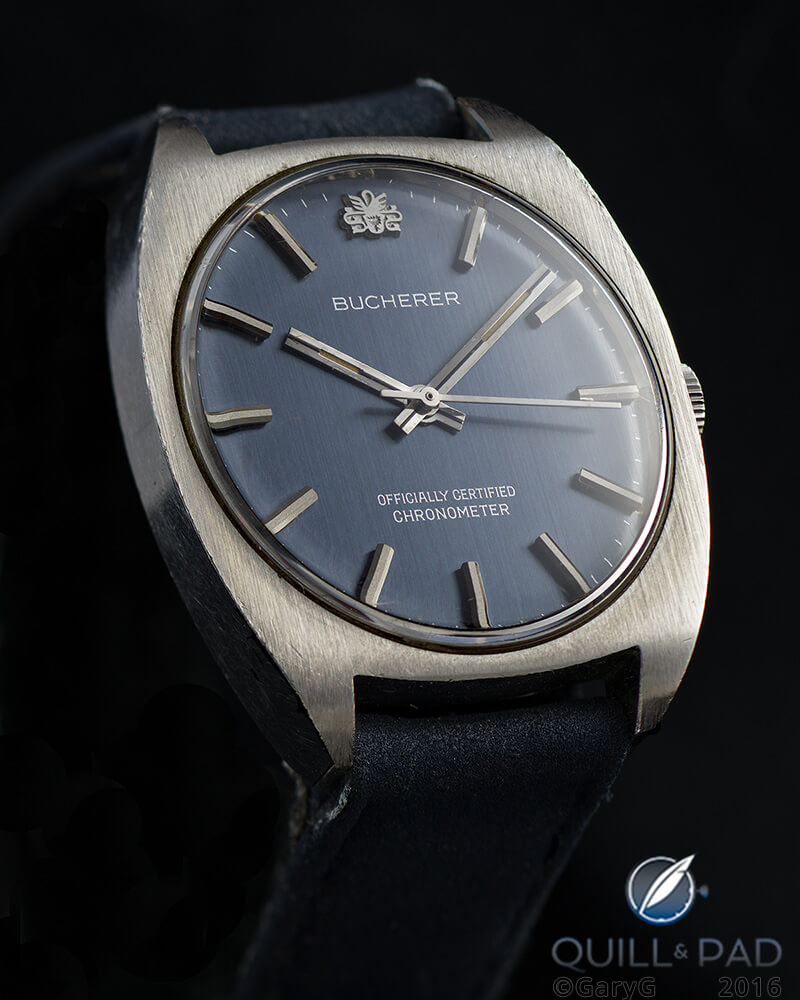
The watch that launched GaryG’s collection: Bucherer Chronometer
If the store were laid out with the same floor plan today, I could take you to the exact spot where I stood at rapt attention as the salesperson explained to me that this particular watch was very special because it had been certified to keep exceptional time.
There were other attractive pieces, but none of the rest had earned the same timekeeping laurels; and when I asked the price, I was delighted to learn that it amounted to US $42.
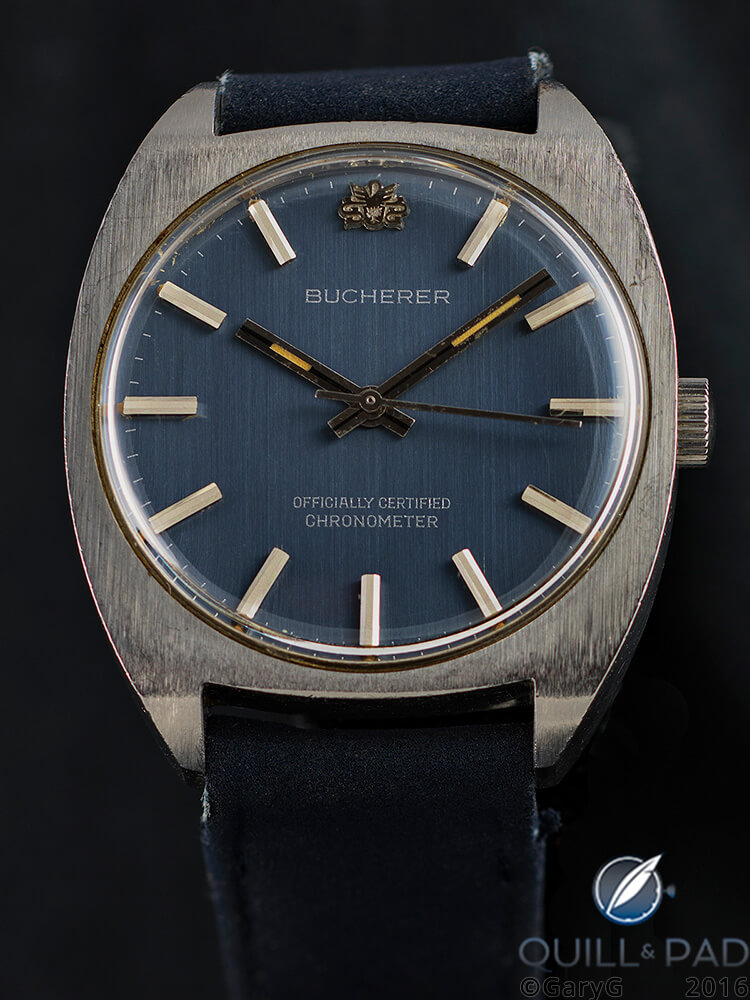
Frontal view of the author’s Bucherer Chronometer
Of course, that left me with a meager six bucks for incidental expenses for the entire remainder of the trip, but little did I care, as I was now the owner of a fine Swiss watch that served as my daily wearer for a decade and still finds its way onto my wrist today.
What’s inside
In truth, I’m not entirely sure what’s inside of this watch, as the case has never been opened! I’ve tried to crack it open a few times over the past years, but without success. I’m content to allow a qualified watchmaker to do the honors rather than forcing the issue.
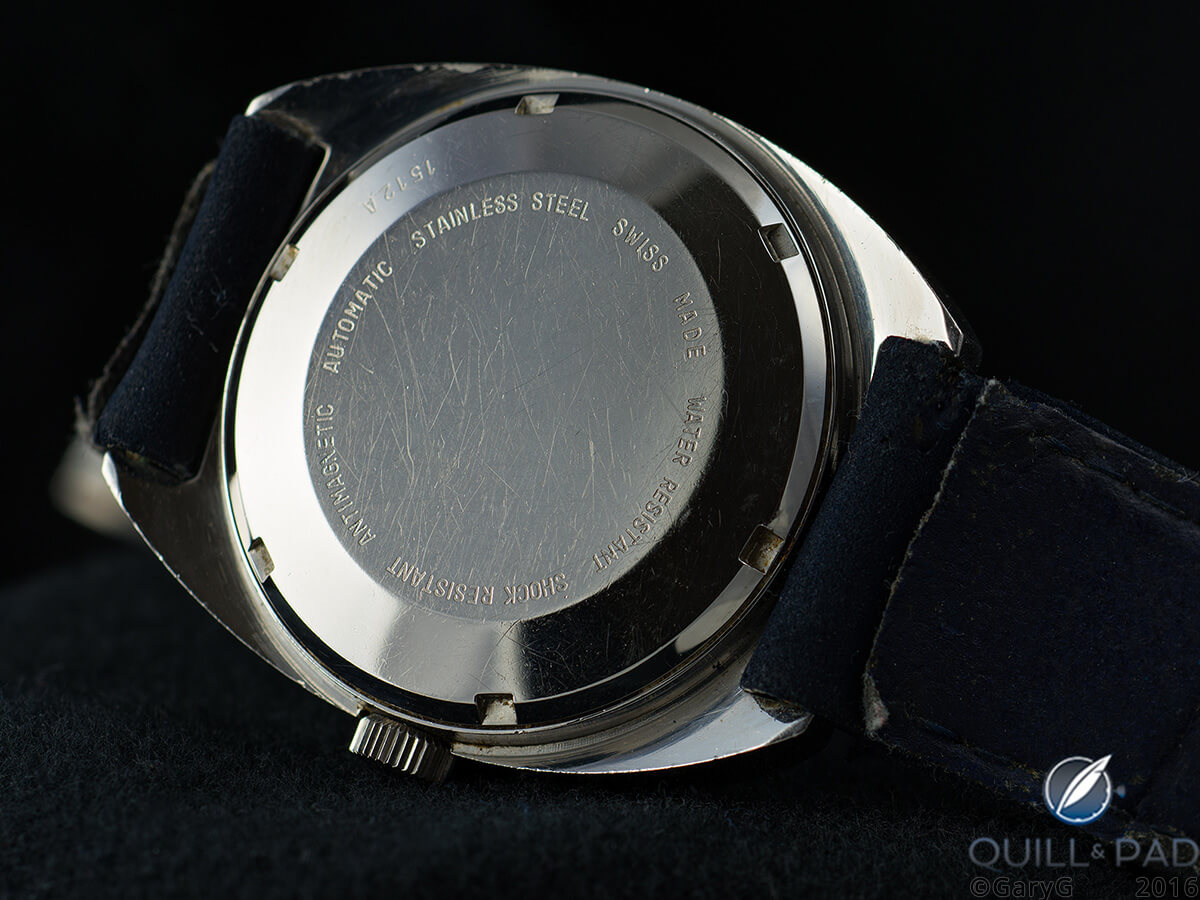
Resistant to many things, including being opened: Bucherer Chronometer case back
However, my research on near-identical watches from Bucherer made during this period indicates that the movement is most likely an ETA 2824 as shown in the image below.
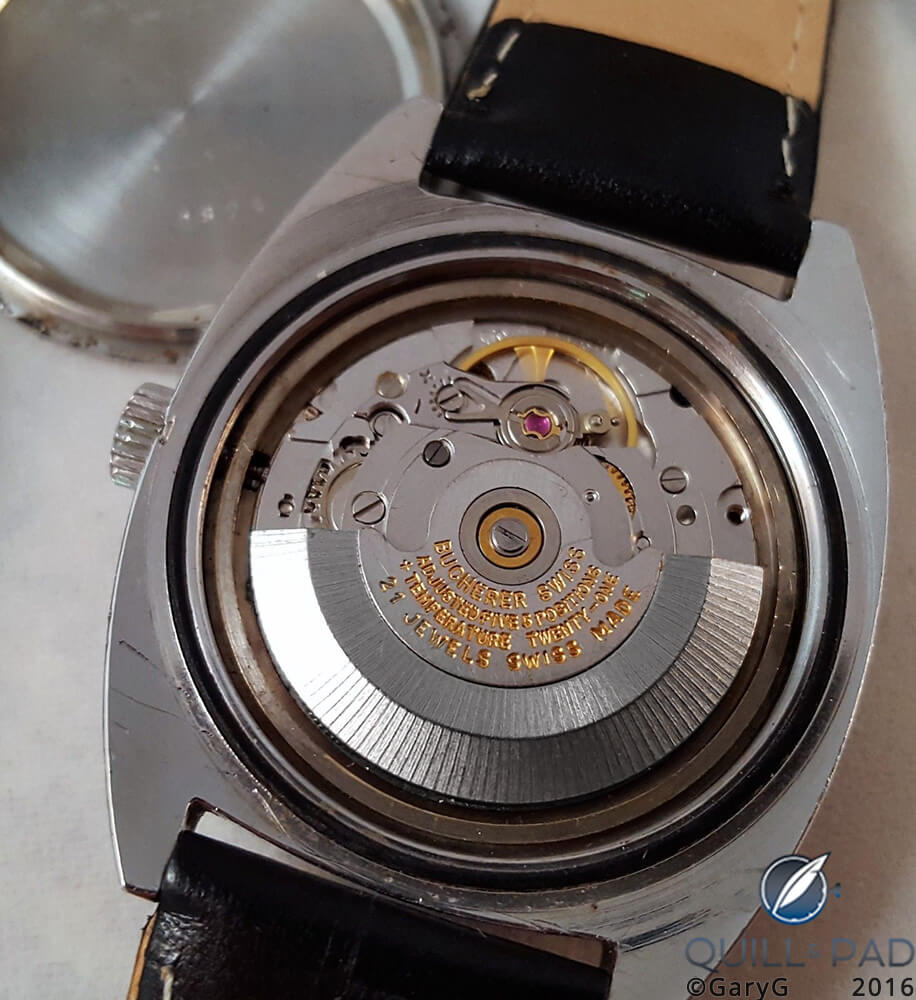
ETA chronometer-grade movement, Bucherer Chronometer
I thought I’d check out how well this watch keeps time after all of these years, and I was fairly impressed. Using my usual non-scientific method (the Kello app on my iPhone), I determined that in both face-up and face-down positions the watch is keeping time to within +20 seconds per day or better.
It seems quite possible that with a thorough cleaning, oiling, and adjustment, this watch could well perform once again within the C.O.S.C. standards.
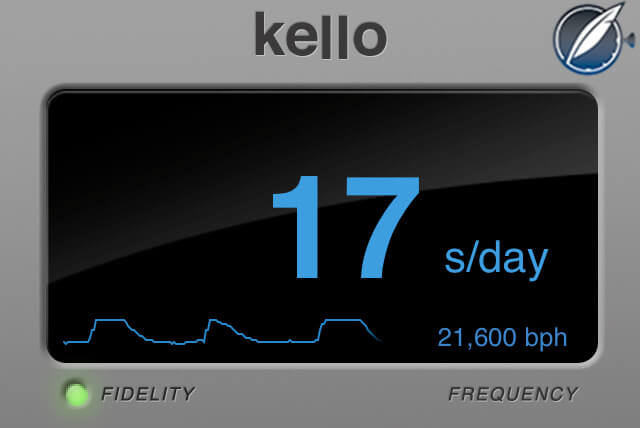
Quick timing check on the author’s Bucherer Chronometer
One thing to note: if you look carefully at the timing report above, you’ll see that the frequency is shown as 21,600 beats per hour, not the 28,800 beats per hour that we associate with modern versions of the ETA 2824; I can also report that my watch doesn’t hack.
This may suggest that the movement inside of my piece is another variant from within the ETA 28xx family or simply a lower-beat, non-hacking version of the 2824 that some sources suggest was made at the time; once I have the case opened I’ll provide any needed updates.
Regardless of the exact designator for the movement, this watch is chock-full of features that I wouldn’t remotely expect to find in a watch selling today for $249, the equivalent of that $42 in today’s dollars.
The chronometer-grade movement is certainly one, but there are others, including the distinctive Bucherer crests visible both at 12 o’clock on the dial and on the attractive steel buckle.
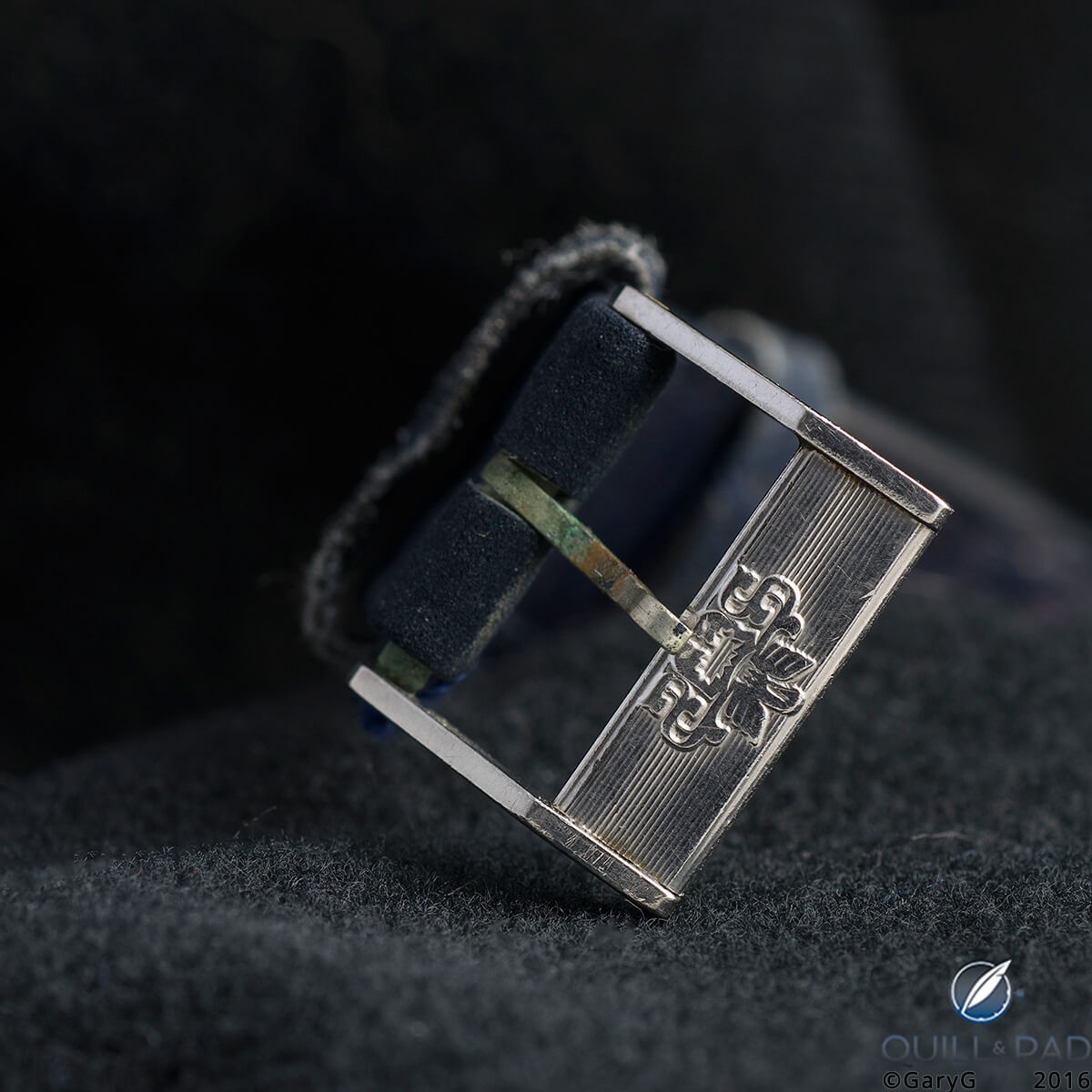
Bucherer Chronometer buckle with distinctive crest
I’m still in love with the dial of this watch; the distinctive brushed blue surface is not too bland and not too vivid, and it’s only recently with my purchase of a similarly-colored piece from Ludovic Ballouard that I’ve found a blue dial that really suits my tastes the way that this one does.
The applied hour markers and tasteful fonts are very much to my liking, and while time has taken a bit of a toll on the tritium-lumed hands, they are completely suited to the rest of the watch and make for a coherent presentation.
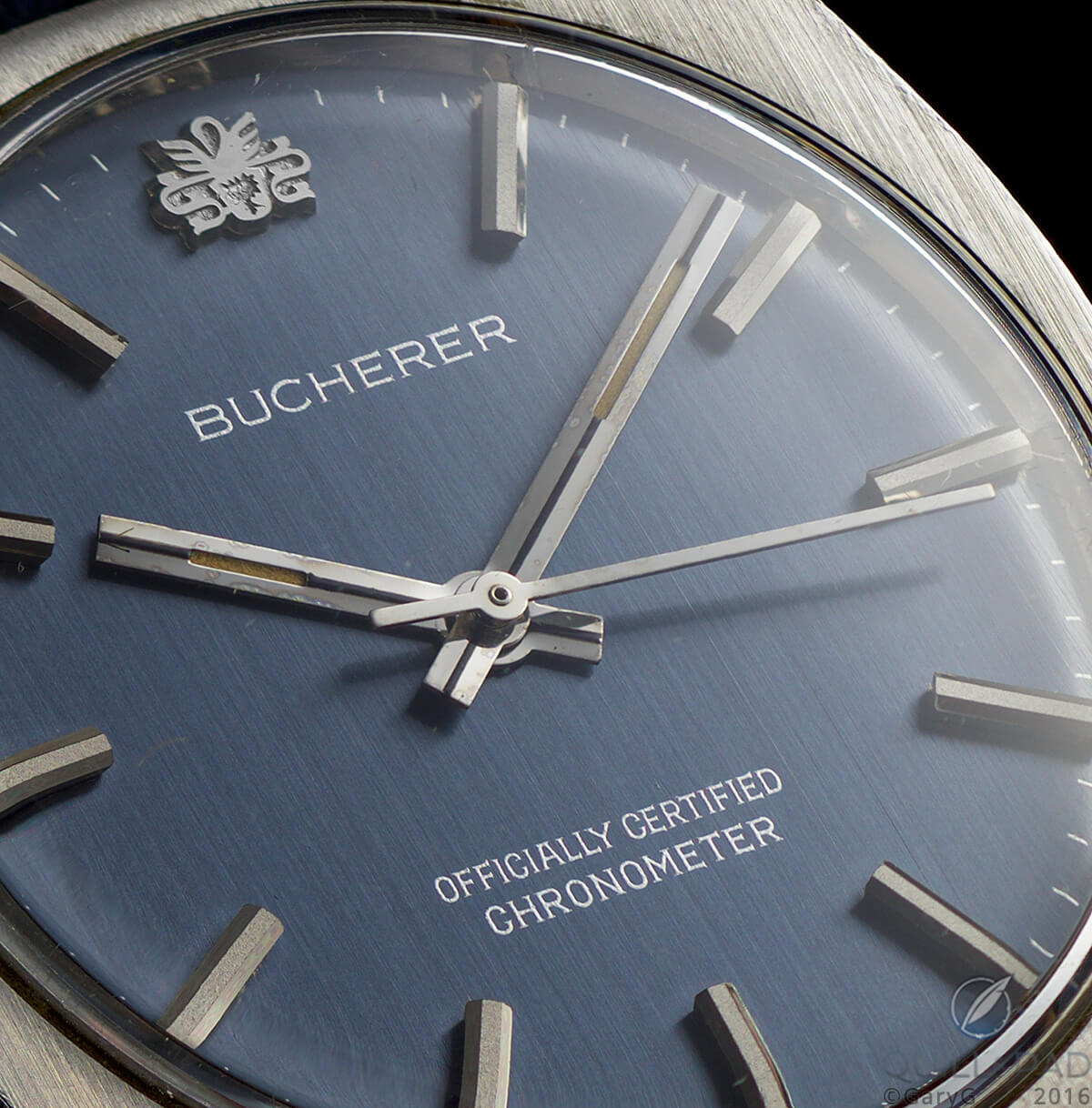
Dial detail, Bucherer Chronometer
On the wrist
This isn’t a huge watch by today’s standards, but with its wide bezel it has a great deal of wrist presence. When I measured it, I had to check several times to convince myself that the case really is only 33 millimeters across; as seen on the wrist it looks easily four or more millimeters greater in diameter.
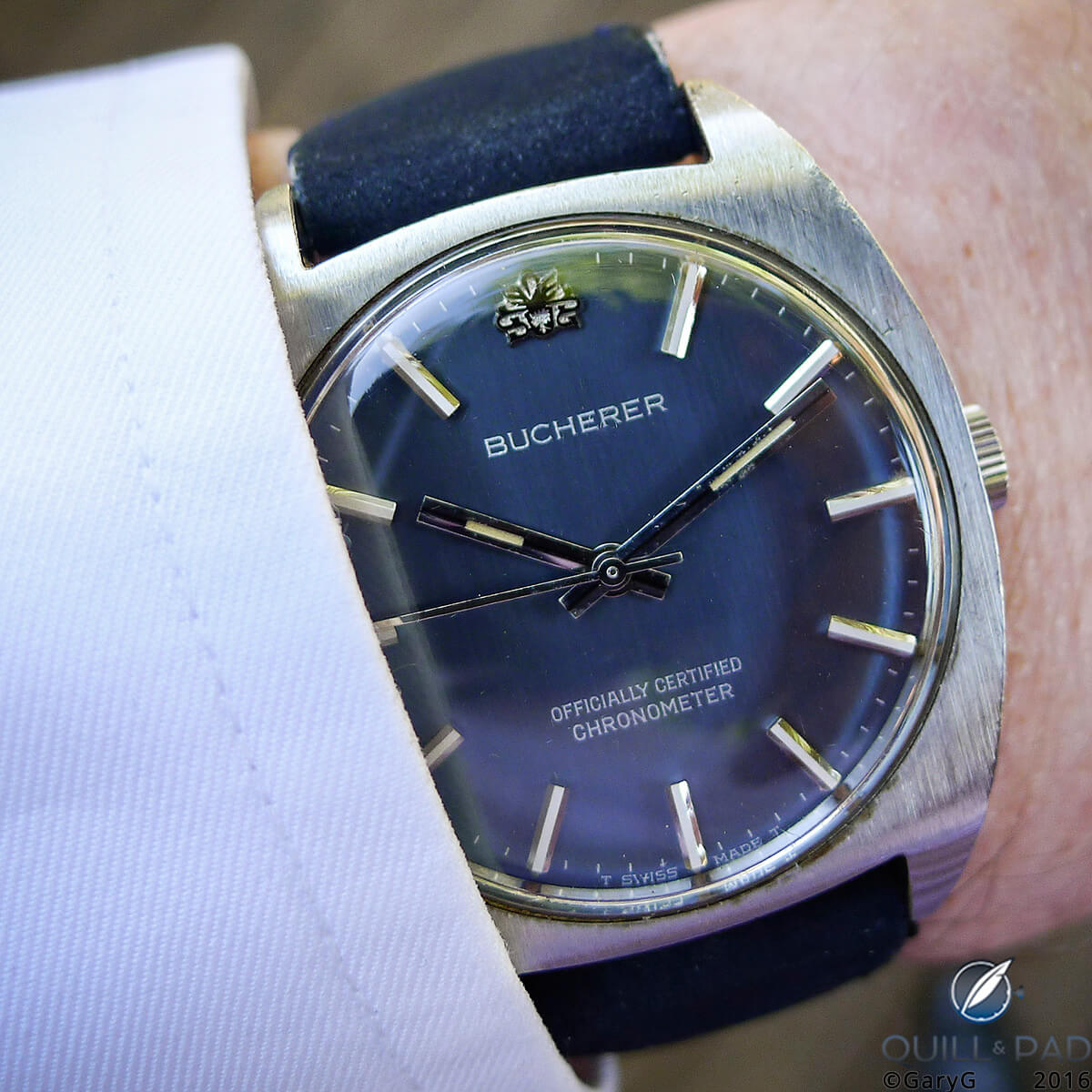
On the wrist: the author’s Bucherer Chronometer
Time machine
Sadly, my very first watch, a Timex given to me by my Dad, seems to have slipped from my grasp; so in terms of watches that have been “mine” from the start rather than passed along from my ancestors, this watch is the earliest one that remains and will always be the very first piece that I purchased for myself.
Every time I wear it, I’m reminded of who I was in those days: brash but insecure; full of hope and plagued with doubts; and just beginning to have my eyes opened to the wonders of the world beyond my small town.
If for no other reason, this watch is, and will always be, precious to me for those feelings it reminds me of.
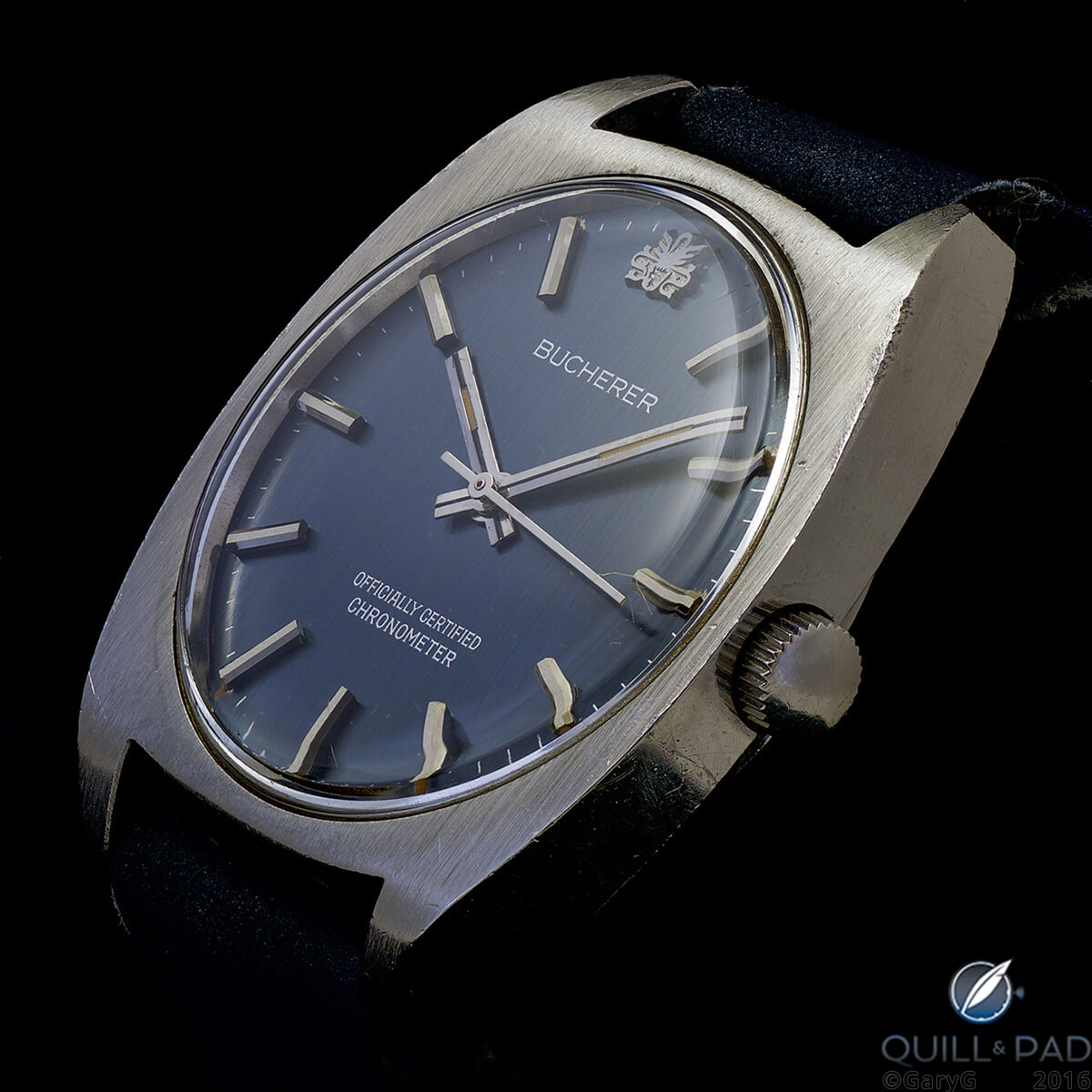
Parting shot: GaryG’s Bucherer Chronometer
Update: the Bucherer movement mystery resolved
As I’m not one to leave any stone unturned, shortly after finishing this article I bought the appropriate tools and unscrewed the case back on my Bucherer chronometer.
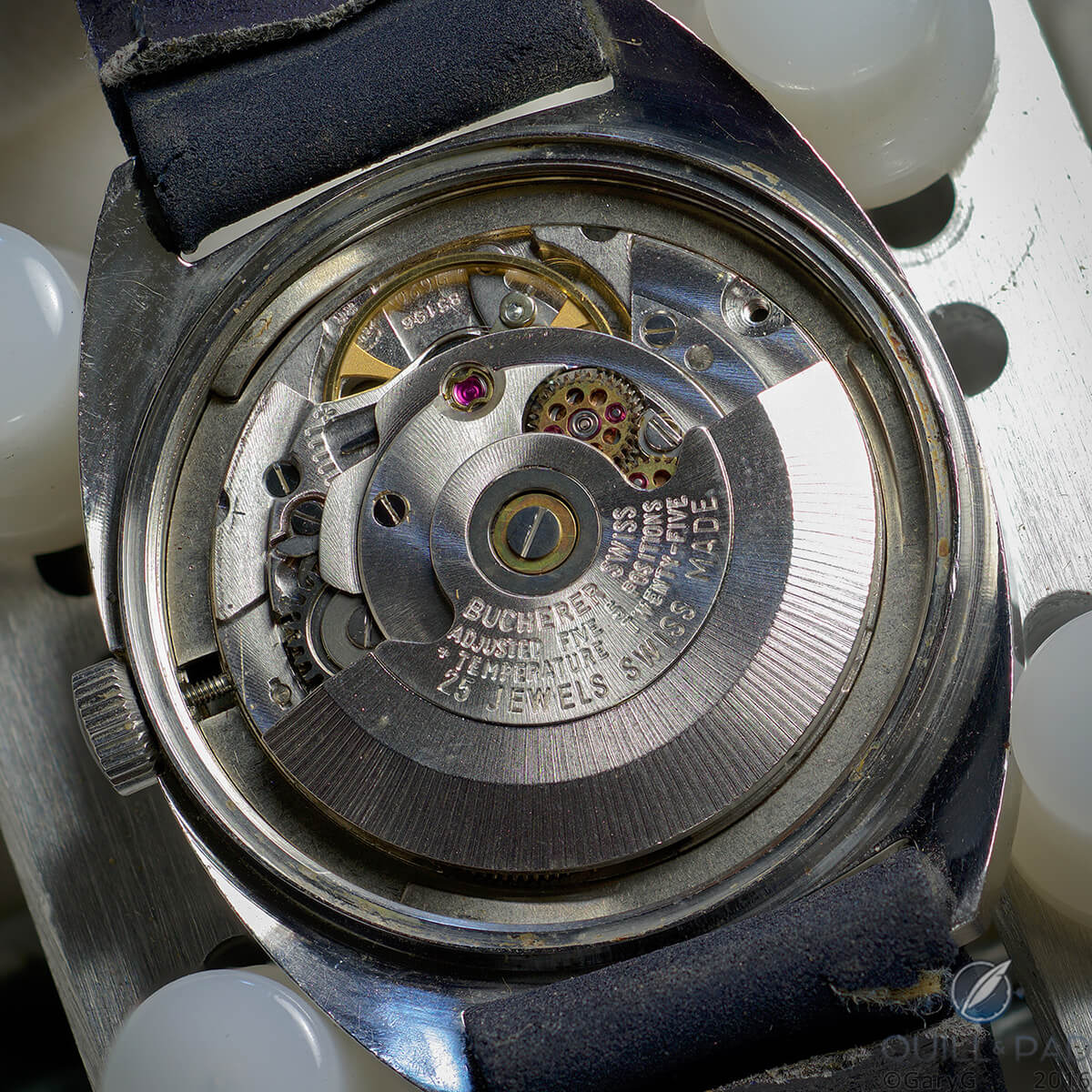
ETA 2620 movement, Bucherer Chronometer
What I found inside was a remarkably clean-looking ETA 2620 movement. As described in the ETA literature, it’s approximately 26 mm in diameter with automatic winding (which appears to be bi-directional), has a 42-hour power reserve, and (as confirmed by my timing app) an escapement frequency of 21,600 vibrations per hour.
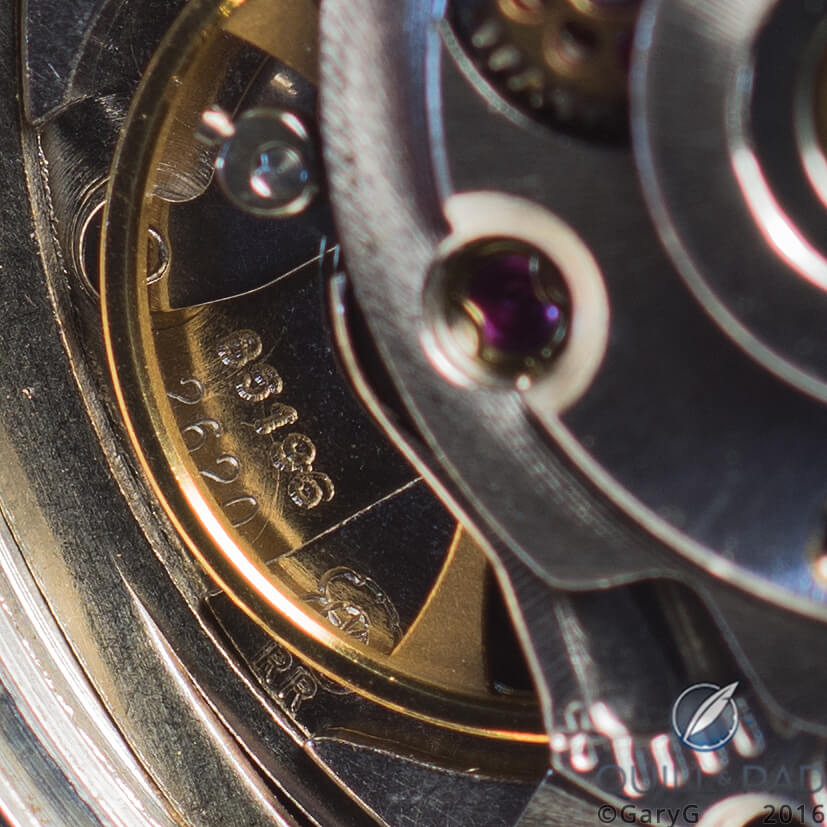
Movement designators, ETA 2620
In the photo above, you can see the “2620” stamped into the plate along with the movement serial number (a feature of chronometer-grade ETA movements), the ETA crest, and the designator “RR.” The latter is a bit of a remaining mystery, as my research so far hasn’t surfaced any documents that establish the meaning of the RR stamp. That said, I’ve only seen it in photos of movements in other Bucherer watches, so it may have been associated specifically with ETA production destined for Bucherer.
Quick Facts
Case: stainless steel, 33 x 39 (including lugs) x approx. 10 mm; Plexiglas crystal, solid screw-in case back
Dial: brushed blue dial with applied hour markers, Bucherer crest and printed markings
Movement: automatic winding; ETA 2620; certified chronometer
Functions: hours, minutes, central sweep seconds
Price: original retail price approx. $42/180 CHF; recent online site listings for comparable watches approx. $225
Production year: 1971
Trackbacks & Pingbacks
-
[…] watch-buying career started as early as 1971 with a piece bought on a student trip to Europe (see A Watch Collection Begins: GaryG And His Bucherer Chronometer), and I’d been wearing a Cartier Tank on a daily basis since 1980, my serial watch acquisitions […]
-
[…] in this topic, as well as the distinctive shape of my own first-ever watch purchase might (see A Watch Collection Begins: GaryG And His Bucherer Chronometer), shown in the photo […]
Leave a Reply
Want to join the discussion?Feel free to contribute!



What a wonderful story. Lovely to see a great old watch still enjoyed and doing the task it was made for.
Bit like my Omega Speedy, bought new in 1972/3 and still put on for high days. I love it.
Delighted to hear that you are still enjoying your old war horse! Thanks very much for taking time to comment — and I’m pleased that the article brought back memories for you.
I want a original bucherer
Hi Bilal — the good news is that these watches do come up for sale on various online auction sites from time to time and they still provide great value for money. Happy hunting!
Lovely story, GaryG
Also, given your incredible watch collection now, it’s amazing what this initial $42 investment has spawned.
I am rather curious if you know what happened to the other Rolex-buying fellow. Given your trajectory, he might own the Patek Graves Supercomplication now
Roman — indeed he might! Sadly I’m failing at bringing his name to mind, but in a box somewhere I think I have the roster from than band tour and if I can find it might be able to jog my memory. Would be fun to see how his watch interests have developed!
This looks like the backstory for your trip to Oldezaal and purchase of your blue dial Gronefeld One Hertz. Quite a journey.
Thanks for your note, Jim, and for thinking of the parallels to my wonderful visit with Tim and Bart Grönefeld! I have been a fan of blue-dialed watches over the years, to be sure, and wouldn’t be surprised to add one or two more before I’m all finished.
What a cool story, Gary. Looks like you love blue dials like I do. My first better watch, acquired in Chicago in the late 1990s, was a blue dial Baume Mercier which I still have. Actually had it recently revised as it stopped running.
Glad you enjoyed the recounting of my journey, Boris! I’m glad that there were parallels to your own experience.
While my watch is still running fine, I think it’s about time that I finally send it to the spa — will be cool to see how accurately it can be made to run after all of these years.
Wonderful tribute to a beautiful watch! I know and appreciate the feelings you have towards this watch. My first “good” watch is an Omega Constellation in 18K and SS with cushion shaped dial that I purchased in Chicago in 1986. I believe it is the first Constellation model that had the “claws” bezel. Like yours the dial indicates it is chronometer rated and will always hold a very special place in my collection. Thank you for sharing your special watch.
My pleasure, Mike, and congratulations on your good taste in acquiring that special Constellation and treasuring it over the years!
I have the same watch in a silver dialed version. My story is that my grandfather bought one in Switzerland on a school trip (he was a teacher) probably in the 1970s. He loved it, and it was given to me by my grandmother when he passed. The twist is that I lost it, or it was stolen, during a house move 5 years ago. The good news is I found an identical one and bought it sight unseen. Keeps great time, better than any other watch in my collection (including 2 rolexes and an IWC 3706). I love it. Mine seems a little small on the wrist, but it is so comfortable and I think of my grandfather whenever I out it on (even though it’s not the exact same watch, but rather an identical replacement).
This is a rather different observation. I was given a Bucherer officially certified chronometer, which shows
the day and date. It was purchased by an aunt in 1971, and I wore it for a long time until it needed repair, which no one would do. I put it aside. Recently, in the Wall Street Journal magazine was an ad for Bucherer with a testimonial by a movie stunt man wearing a Bucherer. He said that after a movie, he would give assisting stunt people a Bucherer watch, and stated that he believed that some Bucherers were make by Vacheron Constantin. This was surprising, and I wondered it it is so.
I’m late to the party, but I believe the “RR” on the movement signifies it was a movement certified for railroad use (adjusted five positions and temperature). These movements were often used in their top-grade versions for railroad watches (Ball, Elgin, Hamilton).
Very interesting! I’m wondering whether the Swiss also observed this convention for fully-adjusted watches — makes for an interesting research project.
Thanks for bringing this up!
Best, Gary
A stunner of a watch, that was when a watch like that could have premium features at its price point as the customer base was large
Glad you like this watch — and you make a good point about the size of the customer base driving the scale economies needed to build a decently finished chronometer watch with attractive dial and hands at that price!
Dear Gary
There are two versions of 2620 and 2622 calibres. The older version uses a pillar for the oscillating weight rotation, and the newer ones have the ball-bearing, just like yours. The newer, ball-bearing rotor versions have been stamped by ETA as 2620R and 2622R. That’s the R on the movement.
Cheers,
Jaanus
Many thanks indeed, Jaanus — a longstanding mystery solved! I really appreciate your sharing your knowledge on this topic.
Best, Gary